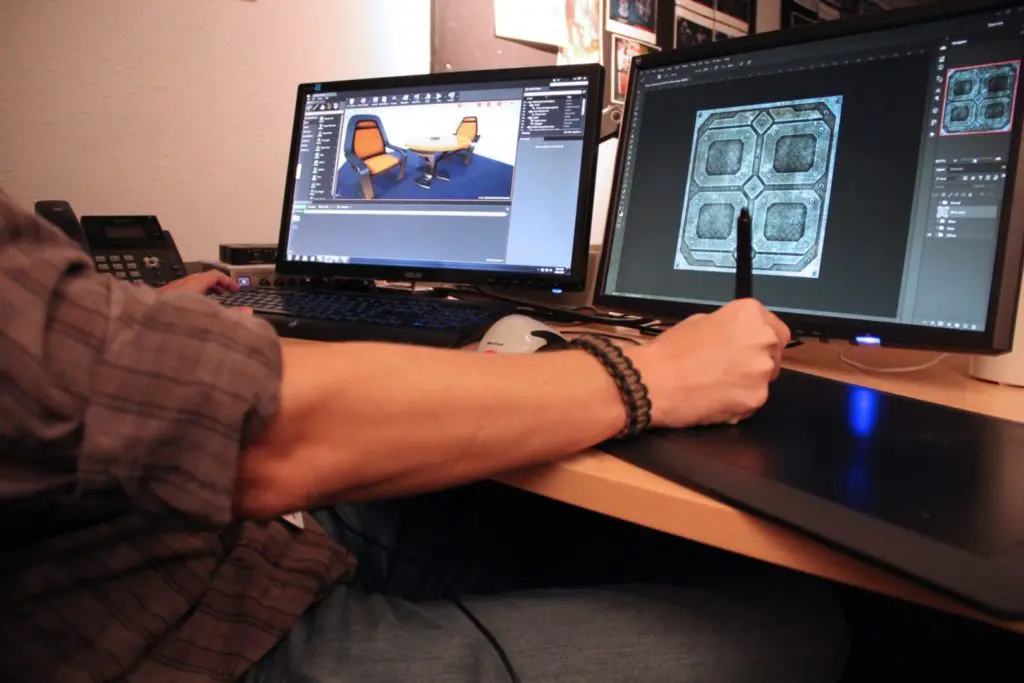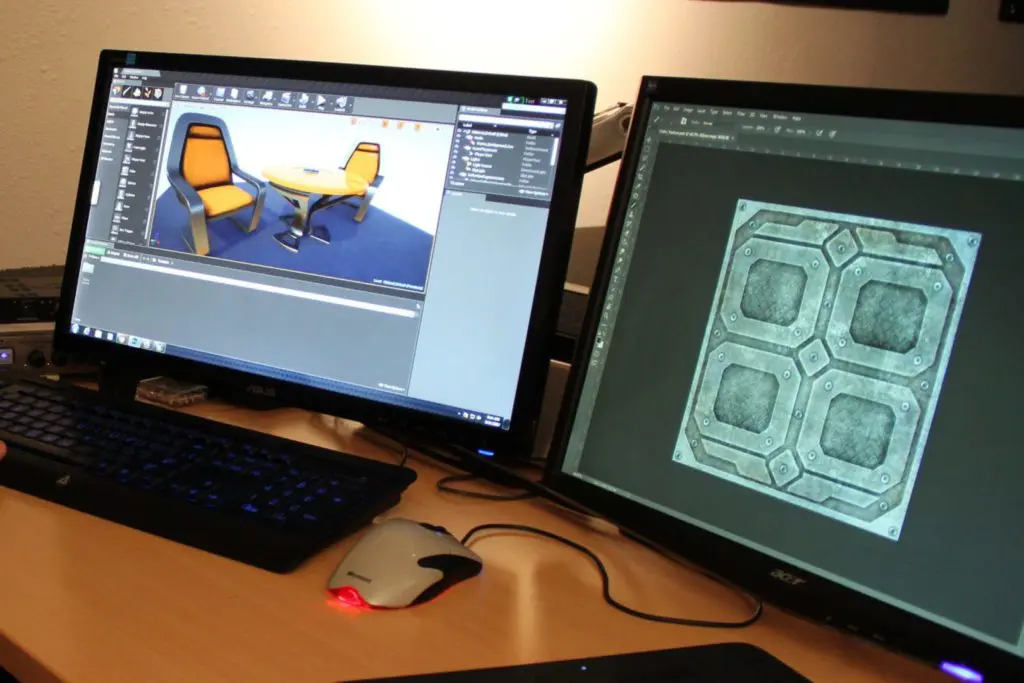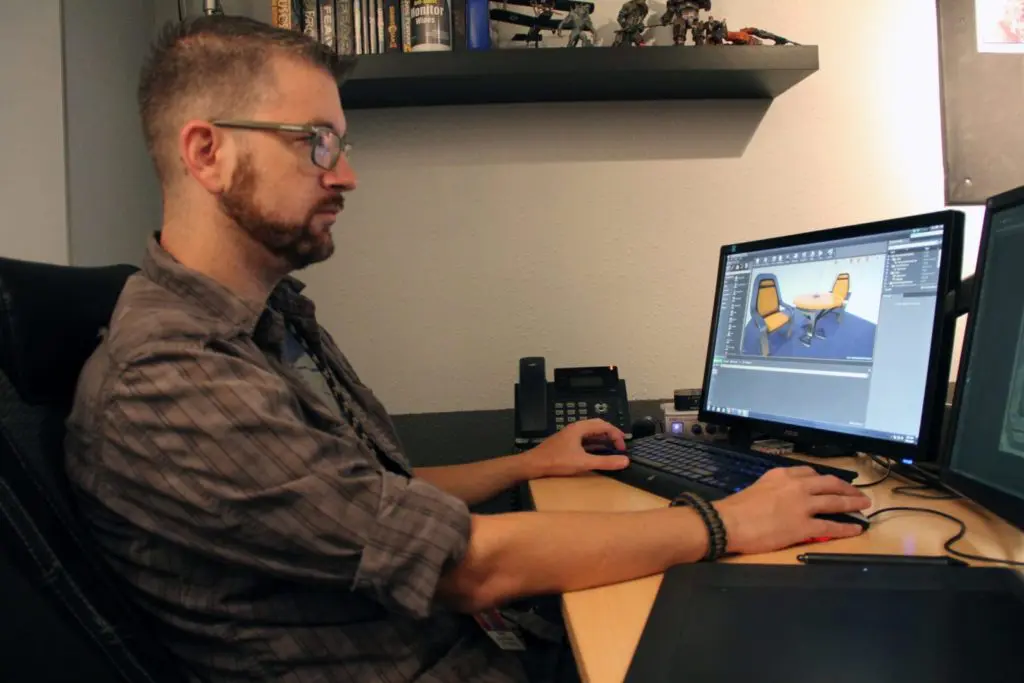One of the most exciting aspects of being a creative in the video game industry is all the wonderful toys. By toys, I actually mean cutting-edge software. State-of-the-art software often makes our jobs far more productive and allows us to break boundaries that we may not have been able to use software from years past.
Written by Dan Greenfield, Instructor at The DAVE School
One of the most exciting aspects of being a creative in the video game industry is all the wonderful toys. By toys, I actually mean cutting-edge software. State-of-the-art software often makes our jobs far more productive and allows us to break boundaries that we may not have been able to use software from years past. This reality is the reason for a little cliché that I like to tell my students regularly: “Be a student for life!”
As a creative, it is very easy to fall into the trap of comfort. I don’t mean that we spend most of our time on the universe’s most comfortable couch, but rather we have a tendency to rely strictly on what we already know. This is not always a bad thing, of course, but where things can become almost hypocritical is when there is clearly a jump in technology – specifically technology that lends itself to streamlining and making our jobs (wait for it!) more comfortable. And yet sometimes we find ourselves unwilling to make the time to learn this new tool that in the back of our minds, we know will make our jobs easier.

The Leap To Unreal
Recently I found myself in this position with the very popular game development tool, UnrealEngine 4. Even though our studio utilized Unity and my past experience was heavy in proprietary engines, Unreal 4’s Blueprint and node-based materials have always been enticing. After some forum research and a team discussion, we all agreed that there was value in learning how Unreal 4 could affect our pipeline. For the betterment of my art skills and for the studio, it was time for some learning!
Even with my experience, I started this learning endeavor with the “at your fingertips” resources like YouTube, Vimeo, and game development forums. Problem-solving your way through a brand new package can sometimes be daunting. There is nothing quite like having the ability to learn from a real person with real experience in that software package who can answer your questions when they arise. Luckily, I have the opportunity of working at The Digital Animation & Visual Effects School, where we teach Unreal 4 to students in the Game Production Program. Knowing this invaluable resource was available, I decided to invest the time to take Jeff Cavitt’s Video Game Production II Course to obtain an understanding where I could teach my students the comparison of the powerful engines.
From getting your game assets into the engine, to getting them looking super fancy and polished with Unreal’s PBR materials, Unreal is nothing short of an incredible game engine. It’s fairly simple to use, even more simple if you are already familiar with an engine like Unity. But what I find most exciting, is just how easy texture blending is, and a number of options available to the creative team in order to achieve a high quality look for game assets – most specifically environment art.

The Payoff
Although this has meant working longer hours at the school than usual, it’s been more than worth it. In just a matter of weeks, I have learned how to create complex materials, basic particles, destructibles, as well as all kinds of new ways to go about texturing environments using Unreal’s very impressive texture blending tech. Furthermore, Unreal isn’t just powerful, it’s a blast to use. Things that would have easily set an art team back hours or even days is now something that a single artist can achieve at a high-quality level in minutes. If you haven’t had the opportunity to use Unreal 4 yet, and you’re interested in improving your world-building skills, just go make the time and start learning it!
As a game designer, I also have to mention how Unreal’s Blueprints could really help a small development team who maybe doesn’t have a lot (or any) code support. Unreal’s Blueprints allow an artist or designer to quickly and easily set-up basic triggers and volumes so that a game level can be flushed out and tested with little to no technical support. This is fantastic for small creative teams that have a need for fast, code-free R&D. On top of assisting me with my teaching position, my team and I have already made the switch to Unreal on our most recent project, and are excited to see where this new road takes us.
Make It Happen
If you find yourself feeling curious, envious or even limited by the technology or pipelines you are using, my advice to any creative, is simply to make the time and learn about that new game engine or software everyone is buzzing about. Chances are, there is a good reason that new tool is getting so much attention from others in our industry. In the case of Unreal, if you already know an engine like Unity, there are many similarities and comparisons which greatly aid in picking up the software quickly.
In short, “Just do it!” There is nothing stopping you but time. Go be a student for life!
Dan Greenfield is an instructor of Game Production at The DAVE School in Orlando, FL. He has worked on a variety of high-profile games, including Cars 2, Hot Wheels: World’s Best Driver, and SpongeBob’s Boating Bash. Most recently, he developed military training simulation programs for Cole Engineering Services, Inc. as a 2D/3D graphic artist and weapons specialist. Dan also has extensive experience with game design, from menu flow to level layout.
About The DAVE School
The DAVE School was founded on June 8, 2000 by two Industry executives looking to create #CareerReady artists with a practical animation school. Today, The DAVE School offers specialized training in Visual Effects and Game Production with extensive practice under industry level supervision.
Located on the backlot of Universal Studios Florida® in Orlando, The DAVE School has an 18,000 square foot facility that includes learning and interactive labs, a dedicated Virtual and Real-Time production stage, a Vicon motion capture system, 3D printing and VR/AR labs and secure student access 7 days a week.
NUC University (NUC) is an accredited institution and a member of the Middle States Commission on Higher Education (MSCHE or the Commission) www.msche.org. NUC’s NUC University – IBC Technical Division (NUC-IBC), NUC University – Florida Technical College (NUC-FTC), The Digital Animation & Visual Effects School (The DAVE School), and Hillsboro Aero Academy (HAA) are included in this accreditation. NUC’s accreditation status is Accreditation Reaffirmed. The Commission’s most recent action on the institution’s accreditation status on 2019 was to reaffirm accreditation. MSCHE is recognized by the U.S. Secretary of Education to conduct accreditation and pre-accreditation (candidate status) activities for institutions of higher education including distance, correspondence education, and direct assessment programs offered at those institutions. The Commission’s geographic area of accrediting activities is throughout the United States.
NUC has four additional academic units: NUC University – IBC Technical Division (NUC-IBC), NUC University – Florida Technical College (NUC-FTC), The Digital Animation & Visual Effects School (The DAVE School); and Hillsboro Aero Academy (HAA). Information about NUC, NUC-IBC, NUC-FTC, The DAVE School, and HAA is available at https://nuc.edu/, https://tecnicos.nuc.edu/, https://ftccollege.edu/, https://dave.nuc.edu, and https://flyhaa.com/.


